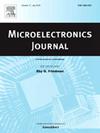3D network-on-chip data acquisition system mapping based on reinforcement learning and improved attention mechanism
Abstract
The three-dimensional Network-on-Chip (NoC) data acquisition system is designed to create a time-interleaved data acquisition system using NoC technology. In the design of NoC application systems, optimizing the mapping algorithm can effectively reduce network communication latency. Aiming at the mapping challenge of a large number of functional IP nodes in 3D NoC data acquisition system, the reinforcement learning and improved attention mechanism mapping algorithm (RA-Map) is proposed. The RA-Map mapping algorithm employs node function encoding and node position encoding to express the properties of an IP node in the task graph preprocessing. The local attention mechanism is used in the mapping network encoder, and the fusion of dynamic key node information is proposed in the decoder. The mapping result evaluation network achieves unsupervised training of the mapping network. These targeted improvements improve the quality of the mapping. Experimental results show that the RA-Map mapping algorithm can effectively model the IP core mapping. Compared with the DPSO algorithm and SA algorithm, the average communication cost of RA-Map mapping algorithm is reduced by 6.5 % and 8.5 %, respectively.

 求助内容:
求助内容: 应助结果提醒方式:
应助结果提醒方式:


